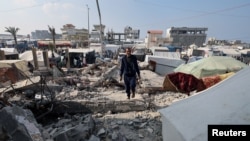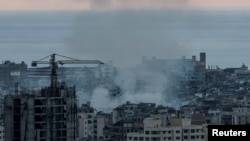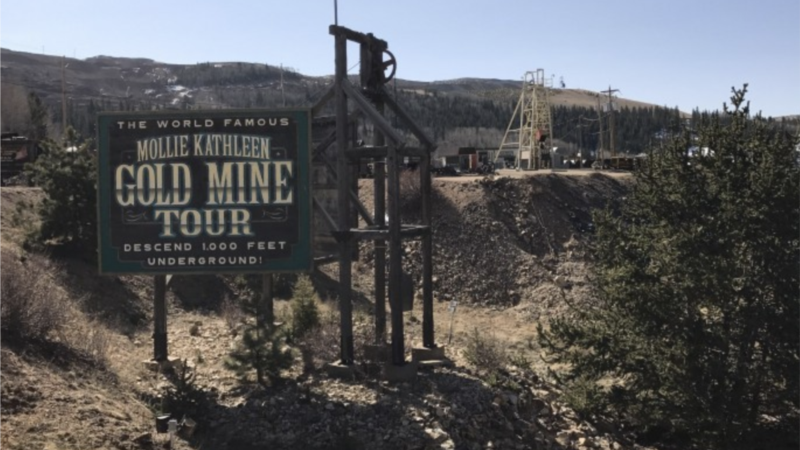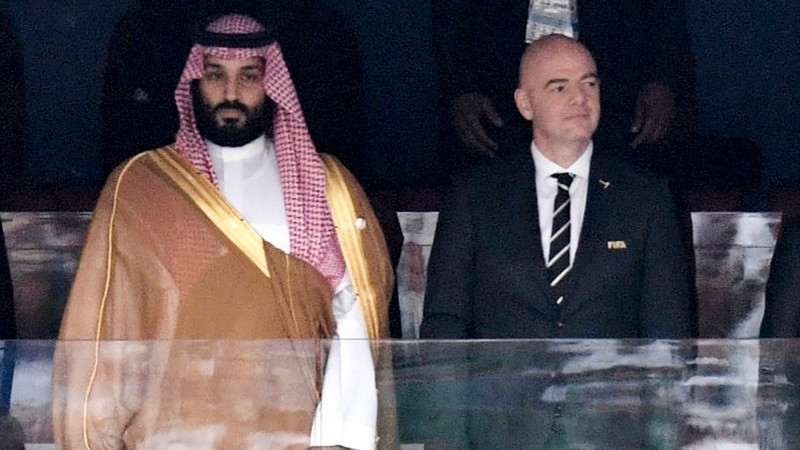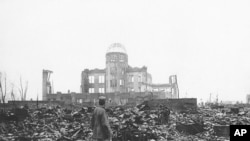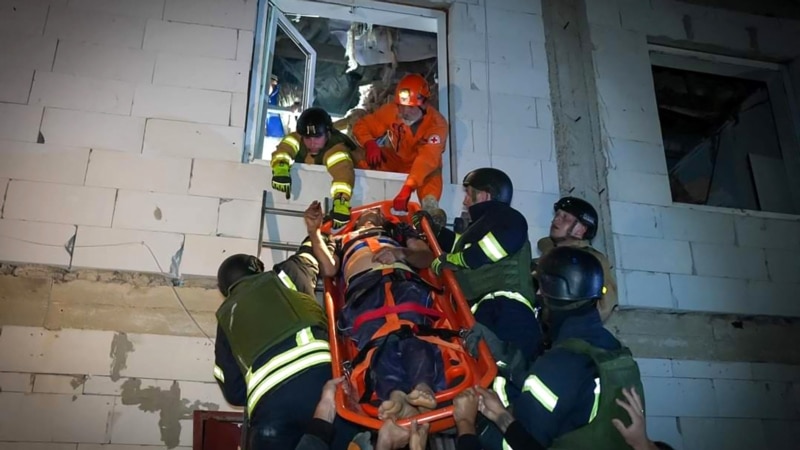Israel carried out airstrikes throughout the Gaza Strip on Tuesday, as residents reported heavy fighting between Israeli forces and Hamas militants in central and southern Gaza.
Tuesday’s clashes included the Al-Bureij area in the center of the Palestinian enclave and Khan Younis, the southern city that is Gaza’s second largest.
Israel’s military also reported carrying new airstrikes in southern Lebanon targeting Hezbollah militants, allies of Hamas who have exchanging fire with Israeli forces across the border throughout the war in Gaza.
Israel also said it struck “military infrastructure belonging to the Syrian Army” in response to what it said were launches from Syrian territory toward Israel.
Syria’s state news agency said several Israeli airstrikes hit the outskirts of Damascus and caused “material damage.”
Israel has warned that, if Hezbollah does not back down, a full-on Lebanon war looms. Both Hamas and Hezbollah are backed by Iran, whose militant allies in Syria, Iraq and Yemen have also been carrying out longer-range attacks against Israel.
The Israeli campaign to crush Hamas has left vast parts of the Gaza Strip in ruins. The Health Ministry in Hamas-ruled Gaza said the Israeli offensive has killed more than 22,000 people. The ministry does not differentiate between militants and civilians but says 70% of those killed were women and children.
Israel launched its offensive after the October attack when Israel said about 1,200 people were killed and some 240 captives taken hostage, with 129 believed still held by Hamas or other militants in Gaza. The Israeli military says 174 of its military personnel have been killed so far in the fighting.
Hamas has been designated a terrorist organization by the United States, the United Kingdom, the European Union and others.
About 85% of Gaza’s 2.3 million people have been displaced, according to the United Nations. The U.N. has warned of the increased risk of hunger and disease, as desperate families shelter in makeshift tents against the winter cold.
The U.N. agency for Palestinian refugees said nearly 1.8 million people are sheltering in or in the vicinity of its overcrowded installations in Gaza. The agency has also reported damage from attacks hitting 128 of its sites, with 142 of its personnel killed.
Britain said Tuesday it delivered nearly 90 tons of aid for civilians in Gaza, including thermal blankets, shelter packs and medical supplies.
The aid arrived at Port Said in Egypt, and Britain’s foreign office said it would be transferred to the Egyptian Red Crescent for delivery through the Rafah crossing and then distributed by the U.N. agency for Palestinian refugees in Gaza.
“Significantly more aid needs to reach Gaza to alleviate the suffering of the Palestinian people,” British Foreign Secretary David Cameron said in a statement. “The UK will continue to work with our partners in the region to open more aid routes into Gaza, including through the proposed maritime corridor between Cyprus and Israel and the Occupied Palestinian Territories.”
Some material for this report came from The Associated Press, Agence France-Presse and Reuters.

